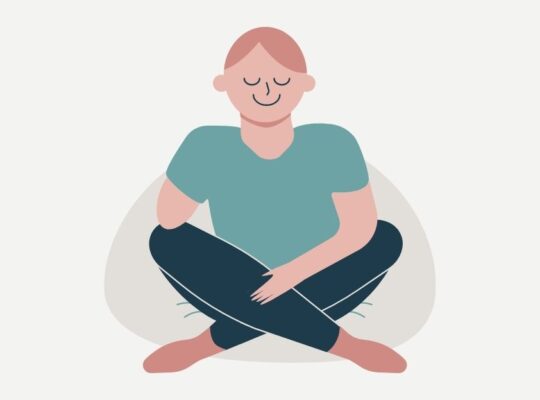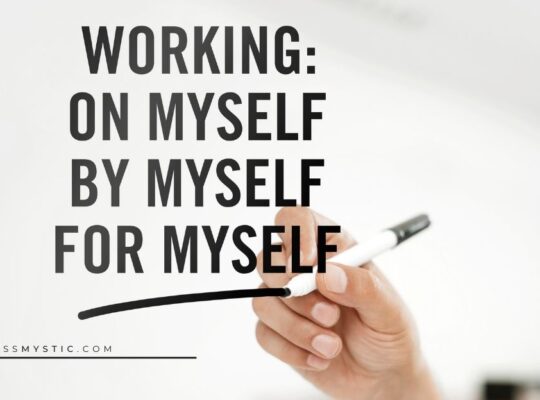Fear may be one of our most ancient emotions, deeply hard-wired into our brains, a product of millions of years of evolution. While our bodies do need to understand and be able to react to fear, what we perceive as a “threat” in today’s world is a far cry from all the things that early man had to fear.
Learning to overcome fear is an essential part of learning to live in today’s world, and the best way to stop fearing things in your life is to understand from where your fear originates as well as to learn some valuable techniques that will help you stop the unproductive worry that is harming your happiness.
We examine the anatomy of fear, including those unrealistic worries about things you cannot control that are robbing you of your chance to achieve your dreams. We will even help you develop some strategies for learning to cope with those unproductive anxieties and fears that plague us all.
What Fear Does To Your Brain
The first stop on this journey is to understand what fear is and what it does to our brains. Since fear is an emotion, it has consequences for our mental and emotional health, but you may not know that fear also has a physical effect on your body as well as your mind.
When you feel fear, your amygdala, which is found in the center of your brain, immediately sends signals to your autonomic nervous system to start a cascade of responses. These generally include a rising heartbeat, higher blood pressure, faster breathing, and a release of stress hormones like cortisol and adrenaline. Blood begins to flow away from your heart and toward your legs and arms, preparing you to escape danger or fight whatever is posing the threat.
What is even more detrimental is that this physiological fear response essentially shuts down the brain’s reasoning and judgment center. When the amygdala kicks in to respond to fear, other parts of your brain lose resources that allow them to operate effectively. The longer you are feeling fear or stress, the more impaired your judgment and reason become, which is why it is difficult to remain clear-headed during a crisis.
But beyond acute situations that cause momentary fear, there is also anxiety, which is essentially the fear of a poorly defined or unknown threat. Anxiety is fearing something that has not happened, that may never happen, that could happen, or that you hope does not occur. This differs from fear, which is in response to a known or understood threat.
Anxiety does not differ all that much, though, in the response it produces in the body. Both emotions produce a stress response in both the brain and throughout your body, and anxiety may actually be the more detrimental influencer to your health.
When you experience anxiety, your physiological response is more diffuse and vague, but the effects on your body are still very real. For example, instead of the racing heart, you get with genuine fear, anxiety produces muscle tension, which can last for hours or even days, depending on how long you focus on the anxious feelings. Anxiety results in headaches, changes in your sleep patterns, tightness in your head, neck, jaw, or face, ringing in the ears, and even numbness or tingling. Anxious feelings do not generally pass quickly, so you could be experiencing symptoms for extended periods.
In some cases, severe anxiety can result in symptoms that can mimic a heart attack, including chest pains, excessive sweating, shortness of breath, dizziness, and feeling faint. In these cases, you need to practice immediate relaxation exercises to get your anxiety under control.
Fear and anxiety are related, though. If you are afraid of something, you can develop anxious feelings about the possibility of it occurring again. Anxiety can also be related to reliving past fears. The bottom line, though, is both are unhealthy for your body and brain, and learning how to get control of your fearfulness or anxiousness is essential.
The Types of Fears We All Have
If you want to, you could probably list one hundred different things about which people are afraid. But, when you boil it all down, those things that we genuinely fear most in life can be condensed into just a few groups.
Without addressing phobias, which can be categorized as fears that are out of proportion to the perceived threat, fears are fairly universal and mostly fall into one of five big groups that stand for the actual roots of where these fears originate.
When categorizing these fears, it is helpful to think of Maslow’s hierarchy of needs, which is often illustrated as a triangle. At the base of the triangle, at its widest section, our needs include the basics we need for survival. Food, water, shelter, rest, safety, and security are all considered to be basic human needs.
As we rise up the triangle, our next layer of needs are those psychological needs that help us to be happy in our lives. These include relationships with others and feeling accomplished in life. The final layer of the triangle, at the top and smaller but nonetheless important, are our self-fulfillment needs and the realization of our full potential.
According to this theory, you cannot realize your self-fulfillment needs without realizing your psychological needs, and you cannot address these needs without first meeting your physical needs. Understanding this can help us recognize how our fears influence us and how they relate to one another.
Extinction Fears
The most basic fear is that of ceasing to exist and the many things that can cause you to die. While the fear of death is certainly among those in this category, this group of fears also represent the very root of our fear of what it means that we could no longer exist.
Fears related to heights, the dark, flying, and contracting diseases fall in this category as do the more existential fears of what it means to live a temporary existence.
Mutilation Fears
Another group of fears includes all those where we fear attack or being physically unsafe. These include fearing an invasion of your personal boundaries, loss of a limb or body part, or of being unable to perform your natural functions.
Among this group of fears include those related to being attacked by animals, creepy crawling things in general, surgical or medical procedures of any kind, needles, germs, and even just general anxiety about crowds and public places.
These first two categories related directly to Maslow’s needs for safety and security. Until these needs are met, it is difficult to feel safe or let go of other fears that may be plaguing you.
Fear of Losing Autonomy
This next category of fear is not only about fearing a lack of movement or of being imprisoned, but it also relates to losing oneself in a relationship, the lack of autonomy that comes with aging, and many other anxieties over losing the ability to live your life as you choose.
Among the fears in this group include becoming paralyzed, feeling restricted or trapped, losing control of the circumstances of your life, feeling confined, being powerless, and fearing commitment or a life of poverty.
Abandonment Fears
One of our strong psychological needs is to feel like we belong and are valued. Therefore, this category is all the fears we have of being rejected or abandoned by others.
In this group of behaviors, you will find the fear of upsetting other people as well as anxieties about being liked, becoming divorced, feeling vulnerable with others, fearing intimacy as you start to rely on someone too much, and ending up alone in life.
Fears of Worthlessness
Some refer to this category as “ego-death” because it stands for all the things, we fear about our own ability to self-actualize. When you are afraid of shame, humiliation, or being unworthy of happiness, you cannot fully realize your potential. Among the many fears in this category is the fear of failure, of being bullied, being criticized, being shamed for your lack of ability, and generally feeling unworthy of success in this world.
This ties directly to Maslow’s highest levels of need, which include our ability to achieve our highest potential in life.
What Does This Mean for Me?
Because there are only five types of fears, once you name the root of your anxiety, it becomes easier to do something about your concerns and address your fearful behaviors. And from these fears are born other emotions, like envy, anger, shame, and guilt. And know that your fear actually triggers these emotions can also help you in coping with them, as well.
For example, if you are feeling jealous toward someone else, this could be caused by a fear of abandonment. You fear your partner will like someone else more than you, and you, therefore, feel jealous toward the third party. Knowing your jealousy stems from this fear can help you evaluate the basis for this fear to determine if it is rational or not, which enables you to respond more appropriately.
Intolerance can even be traced back to fear. If you are intolerant of someone else’s beliefs, it is likely that you have a fear that your ideas are somehow not worthy or are inferior in some way. This feeling of worthlessness can become negativity towards others, as you hold tightly to your beliefs and oppress others because of this fear.
While there are indeed some fears that are necessary for our safety and security, much of what we are afraid of serves absolutely no survival need but instead are related some of the needs higher up in Maslow’s hierarchy.
In some cases, your behaviors may even be impulse reactions that are essentially fearing your own fears, thus trying to avoid similar situations. For example, you may put off going to the doctor because you fear the possibility of unwelcome news or are avoiding the memories of past bad experiences.
These reactions are often so quick and automatic we may not even recognize them as fearful behaviors, but that can quickly start to control your life when you are simply living in avoidance of your fears.
When Fear Freezes You In The Past
One way that fear can influence your behavior is it can keep you stuck in the past, reliving and fixating on wrongs or hurts you suffered or ruminating over your old disappointments and failures.
When you allow this to happen, you are no longer living your life in the present or engaging in the formation of your future. Being stuck in the past is an unhealthy coping mechanism that stands for a fear of moving forward, or possibly failing again, or of ending up worse off than your current situation.
Sometimes, we are so afraid of moving forward or letting go that we even fixate on happy things from our past. For example, reliving how wonderful your old job was that you lost unexpectedly can keep you from trying to find a newer job that you might enjoy just as much (if not more). In this case, you are not afraid of losing the job. You are worried no job will ever be good enough again.
Learning to let go of the past means that you can accept what happened before, that you are ready to engage in your present life fully, and that you want to play an active role in creating the future you hope to achieve. Until you can do those three things, though, you are likely to remain stuck in the past.
Is Worry Productive?
Not all worry is unproductive. And knowing the difference between productive and unproductive worries can help you manage anxiety, enhance your emotional well-being, Unproductive worry is so because it does not or cannot result in action.
It includes worrying about unlikely outcomes, assuming that bad outcomes will lead to even worse consequences, being concerned about events so far in the future that they do not even need solutions in the present, and rehashes negative experiences in the past.
Other types of worry that are unproductive include thinking you can control all aspects of your life, refusing to accept the negative experiences in your life, or needing approval from others to be happy. Perfectionism is a form of unproductive worry, too.
What do these things have in common? They all represent expended energy that does not actually benefit you or help you to solve a problem. This type of anxiety represents negative thinking that, once completed, leaves you in the exact same position as when you started.
When is Worry Productive?
Productive worry is the concern and thought about things you can change or control. Productive worry helps you solve a problem or resolve some situation. It is worry that is focused on a situation, not an emotion, and it is not focused on a narrow solution or set of parameters that must be adhered to.
Where unproductive worries focus on possibilities that have not even happened yet, productive ones focus on the ways to resolve problems you actually face today.
Productive worry is also acute, lasting long enough to address the issue at hand, while unproductive worry is often chronic because there is no real endpoint. Productive anxiety leads to action plans, a list of things to do, and a goal you look to accomplish.
You can turn an unproductive worry into a productive one, though. Let’s say, for example, that you have been thinking a lot lately about your house burning down. You dream about the possibilities, you spend time every day wondering what would happen to your children or pets, and you still are focused on what if this possibility occurs.
Well, you can turn this anxiety into a productive set of actions, instead. What can you do today to help prevent your house from catching fire? What can you do to ensure the best outcome, should your house catch fire?
Make a list of things to do that include checking your smoke detectors, changing batteries, formulating an exit plan for you and your family, and having regular drills so everyone knows what to do. This is taking action to help alleviate your fears, and then you can move on once you feel confident you have done what you can to prevent this tragedy from happening.
Turning Fear and Anxiety into Positive Action
For nearly every unproductive worry, there is a way to turn it into a plan of action. If there is not, that means it is either so unlikely to happen or so far out of your sphere of influence that it is simply not worth your mental effort to continue to fret over it.
Here are some other strategies you can use to help you manage your worries and turn them into more productive uses of your mental energy.
Strategies for Managing Anxieties
- Set reminders on your phone to help you remember things you are fearful of forgetting. If you are afraid of forgetting to take your medication or pick your kids up from school, set alarms to ensure you never forget. You can even set monthly reminders for things like checking smoke alarms or other safety measures.
- Take photos of things you worry about to assure your mind that you have nothing to fear. For example, if you worry about leaving the door unlocked, take a picture of the locked door as you leave the house each day.
- Use time limits for unproductive fears. If you need to worry about peace in the middle east, then you can do that for exactly ten minutes every week. After that, you need to move on.
- Schedule time to think about your anxieties. If you can’t let go of you need to worry about certain things, put them on your calendar and spend a finite amount of time concentrating on them. Then, move on.
- If you can’t seem to shake a worry, try to bore yourself with it by thinking about it repeatedly until you can’t stand to think about it anymore.
- Ask yourself what you can do today that will decrease the chances of your worry from becoming a reality. If you can do something, do it. If you can’t control the situation in any way, write down your worry to give it credence, then move on to more productive endeavors.
How to Let Go of the Past
Make a commitment to living in the present. Set an intention that you will let go of the past disappointment or hurt to which you are clinging. This will help you make a conscious decision to let go and move on.
Express your negative emotions about the past, which can help you say good-bye and move forward. Acknowledging how you feel and the reasons for your pain is necessary to move on. Even if you do not say it to anyone else, getting the words out to yourself or on paper is beneficial.
You also have to accept your role in whatever went wrong. To let you, you cannot blame anyone else or just play the victim in your situation. Acknowledge the choices you made, so you know which new ways to make in the future.
Be mindful of your thoughts so you can stop them from creeping into the past. Pay attention to your inner voice, and practice being grateful for what you currently have in your life.
Letting Go of Other Fears
One of the most effective strategies for eliminating the power that fear and anxiety have over your life is to understand it better. Getting to know your concerns, facing them head on and digging deep within yourself to uncover their nasty roots, is perhaps the healthiest technique for letting go and moving on. Until you can accept the origin of those fears, you will not be able to move on, so spend some time with your worries if you really want to get rid of them for good.
Getting to know your fear triggers is also helpful. Often, there are specific situations, people, or stimuli that precede fearful thoughts. What, if anything, triggers you to be afraid or anxious? What does this tell you about why you are afraid, and what can you do with that information to stop feeling that way?
Be sure to reflect on exactly what it is that is causing you to fear. Return to those five big groups and look closely at what is bothering you. In which group does it belong? Now, is it a productive fear? If not, it is time to let it go.
Focus on building your own sense of self-worth and acceptance. Many of our fears stem from a negative sense of self, so learning to love yourself more can help you be less afraid.
If you have been clinging to fear for some time, you will need patience as you learn to let go. Working through difficult emotions that are the root of your fears needs energy and commitment, so be sure you are giving it the attention it needs.
Be mindful of how fear is affecting your behavior toward yourself and others. Pay attention to how you are allowing fear and anxiety to control your goals, actions, and thoughts. You cannot hope to change your fearful behaviors until you understand their true extent.
Start thinking of mistakes as opportunities, as it can help you move on from the past Whatever went wrong in the past taught you something, so embrace that new knowledge and use it to make a plan for your future.
Fear has a way of breeding more fear, so beware of the anxiety cycle. That fear response makes it difficult to think clearly, and negative thoughts have a way of pushing anything positive to the side. Your fear may cloud your judgment and cause you to magnify some events, too. Be aware that, when it comes to fear, it does not do your brain any favors.
Final Thoughts
Learning to understand fear is the key to letting it go and living your life without being afraid. Fear is not an evil force waiting in the dark to take you over. It is information. Fear and anxiety are telling you something about how your mind works, about what lives in your subconscious thoughts, and things that are important to you.
When you stop fearing your fear and start paying attention to it, you can learn to listen to the information it is trying to tell you.
Only you can decide if you are ready to let go of your fears and move on with your life. And once you decide, you can take back the reins and stop letting anxieties and fears lead you away from your best self.
You are much more powerful than any fear or anxiety you are experiencing. You do not have to keep living in fear. When you opt for a different way of experiencing life, then you will open a world of possibilities.







